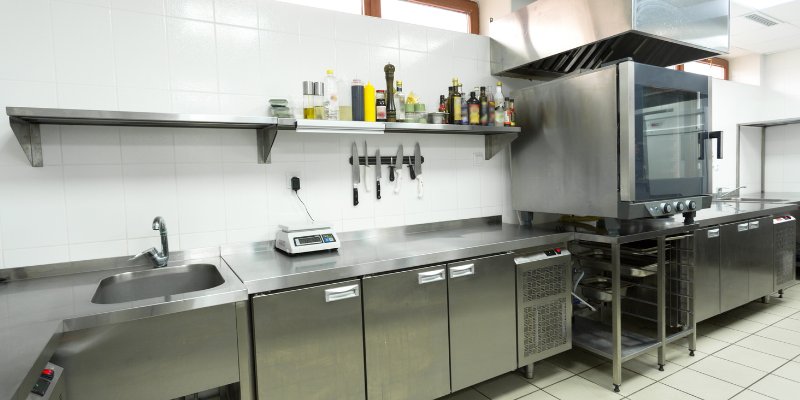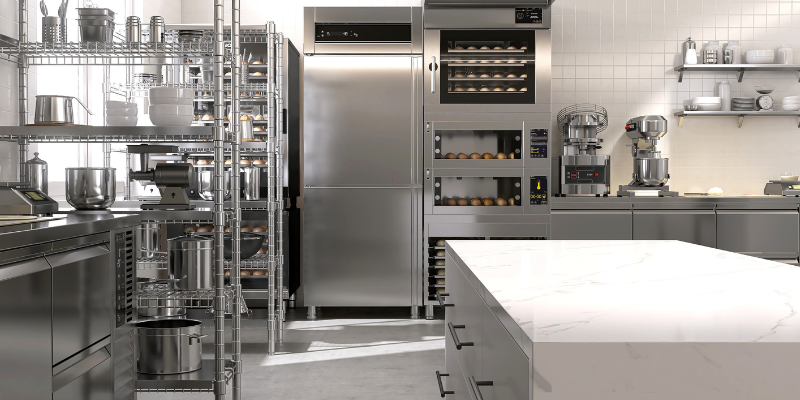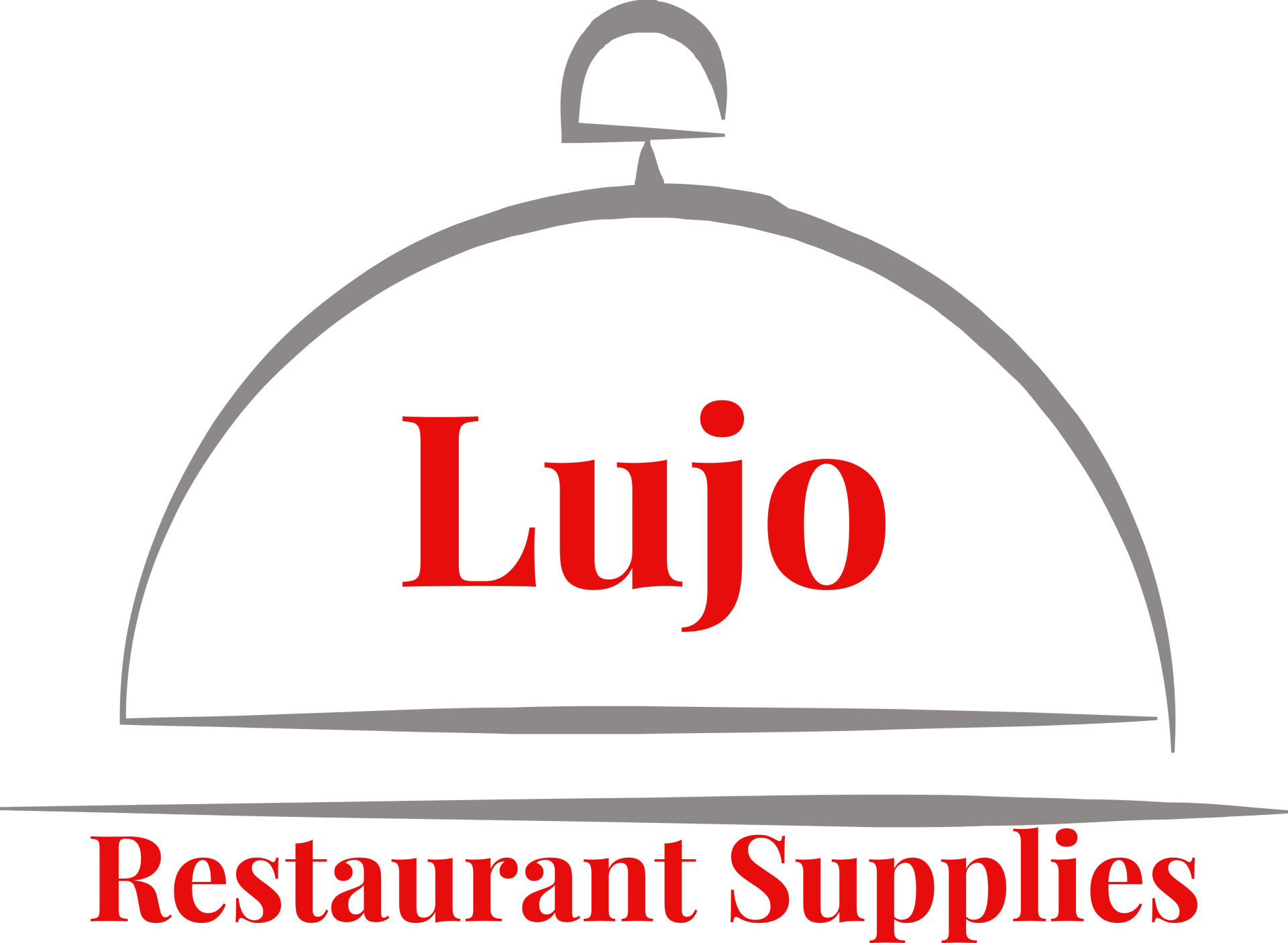Table of Contents
ToggleIn the bustling and competitive world of the restaurant business, the right equipment for a restaurant is as crucial as the culinary skills of the chefs or the hospitality of the staff.
Finding reliable, high-quality restaurant equipment can significantly impact your restaurant’s efficiency, customer satisfaction, and ultimately, your bottom line.
However, navigating the market to find these essentials can be daunting, given the plethora of suppliers, the high costs associated with restaurant supplies, and the often slow shipping times that can disrupt operations.
In this guide, we’ll walk you through the essentials of selecting the best restaurant equipment, finding trustworthy suppliers, managing costs, and ensuring timely delivery, all to keep your kitchen running smoothly.

Equipment for a Restaurant: Understanding the Basics
At the heart of every successful restaurant is a well-equipped kitchen, seamlessly integrating a variety of appliances and tools to create culinary masterpieces.
The basics of restaurant equipment span a broad spectrum, encompassing everything from the high-heat power of commercial stoves and ovens to the precise chill of refrigeration units.
To keep your operation moving smoothly, you will also need the right food prep counters and efficient dishwashing machines.
To tailor your equipment selection effectively, it is crucial to closely analyze your menu offerings.
understanding which tools will best bring your dishes to life while also considering the daily volume of your business to ensure your kitchen can handle peak service times with ease.
Space optimization within your kitchen layout is another vital aspect, as the arrangement of equipment can significantly impact the flow of operations, potentially affecting service speed and food quality.
Find energy-efficient equipment
Additionally, the sustainability of your restaurant equipment through energy efficiency is a concern that transcends mere environmental stewardship; it directly influences your bottom line through utility cost savings.
Modern advancements have led to a wide range of energy-efficient models that, while possibly higher in upfront cost, offer considerable long-term savings.
Navigating the balance between upfront expenditure and potential savings requires a keen understanding of not just the immediate needs of your restaurant but also an eye toward future growth and scalability.
The durability and reliability of each piece of equipment must be weighed against its cost, factoring in how integral it is to your operation.
Prioritizing investments in high-usage items that will withstand the rigors of daily service can prevent frequent replacements and minimize downtime, thus safeguarding the continuous flow of your kitchen’s output.
This holistic approach to understanding the essentials of the equipment for a restaurant prepares you for the initial setup of your operation.
Finding Reliable Suppliers for Your Equipment Needs
Identifying a dependable restaurant equipment supplier is akin to striking gold in the culinary industry.
Whether you are calculating the costs of opening a new restaurant or looking for suppliers for your existing operation, finding the right partner is crucial for your success.
These partners in your business journey can significantly ease the process of equipping your establishment with the right tools for success.
Begin by scouring for suppliers known for their reliability and stellar reputation in the market.
An effective way to accomplish this is by tapping into the collective knowledge of your industry peers.
Ask other restaurant owners about their suppliers
Engage in conversations with fellow restaurant owners and chefs, gleaning insights into their experiences with various suppliers.
Their recommendations can lead you to trusted sources that they have personally vetted through business transactions.
Another fertile ground for discovering top-notch suppliers is industry trade shows, which are often teeming with a wide array of vendors showcasing the latest and most advanced kitchen equipment.
These events not only allow you to physically inspect the products but also provide the opportunity to interact directly with suppliers.
Once potential suppliers are on your radar, conduct a thorough evaluation by scrutinizing their track record in the industry.
Check your supplier’s reviews
This includes reading online reviews and testimonials, which can offer a glimpse into the supplier’s reliability and the quality of their equipment.
A reputable supplier should be transparent, willing to share references or case studies and be equipped to offer insightful advice tailored to your specific restaurant needs.
Furthermore, the sign of a truly valuable supplier extends beyond the quality of their equipment; it encompasses their commitment to outstanding customer service.
This includes their responsiveness to inquiries, their flexibility in accommodating your needs, and their ability to provide prompt solutions when issues arise.
A supplier that goes the extra mile in supporting your restaurant’s operations can become a pivotal element of your success story.
Embarking on the quest for reliable restaurant equipment suppliers with these strategies will pave the way for fruitful partnerships, ensuring that your kitchen is equipped with the tools it needs to thrive.
Tackling the High Costs of Restaurant Supplies
The financial burden of outfitting a restaurant with top-notch equipment is a significant challenge that restaurant owners often face.
To navigate this obstacle, adopting a strategic approach to purchasing can yield substantial savings without compromising on quality.
One effective method is to consider the acquisition of gently used equipment.
Numerous kitchen supply stores specialize in the resale of refurbished items, offering them at a reduced cost compared to new items.
This option not only aids in budget management but also contributes to sustainability efforts by giving a second life to perfectly functional equipment.
Consider leasing your commercial kitchen equipment
Additionally, exploring leasing options presents a viable alternative for managing the outlay associated with expensive appliances.
By opting for a lease, you can distribute the financial impact over a period, thus maintaining a healthier cash flow for your business.
Leasing equipment for a restaurant can also offer the flexibility to upgrade as newer technologies emerge, ensuring your kitchen remains at the forefront of efficiency and innovation.
Another cost-saving tactic is to participate in trade-in programs.
Many suppliers offer attractive discounts on new purchases when you trade in your old equipment.
This not only reduces the cost of the upgrade but also takes care of the disposal of your outdated machinery, further simplifying the process.
Beyond these strategies, establishing strong relationships with suppliers can lead to opportunities for bulk purchase discounts or access to special promotions not widely advertised.
Explain your specific needs to our supplier
Open dialogue about your business needs and plans can prompt suppliers to offer personalized deals that can lead to considerable savings over time.
Lastly, staying informed about government incentives or rebates for energy-efficient equipment purchases can also reduce costs.
Investing in energy-efficient appliances might come with a higher initial cost but can result in lower utility bills and potential tax advantages, contributing to long-term savings.
By employing these strategies, you can significantly alleviate your restaurant’s financial pressures, enabling you to invest in quality restaurant dinnerware and glassware.

Strategies to Overcome Slow Shipping Times
Delayed delivery of equipment for a restaurant, can pose a significant challenge, potentially disrupting the operations and affecting your customer satisfaction.
To navigate these waters effectively, strategic planning and proactive measures are essential.
Initiating the process of equipment acquisition well before the actual need arises is crucial.
For items that are bespoke or have inherently longer manufacturing and delivery timescales, early action can mitigate the risk of operational disruptions.
Draft a detailed procurement schedule that aligns with your restaurant’s opening or renovation timelines, factoring in potential delays to avoid last-minute crises.
Building robust relationships with your suppliers plays a pivotal role in ensuring timely deliveries.
Clear, ongoing communication about your expectations and timelines helps suppliers prioritize your orders.
Check-in regularly with your restaurant equipment supplier
Regular check-ins can provide updates on the progress of your order and any potential delays, allowing you to adjust your plans accordingly.
Opting for local suppliers when feasible is another strategic move that can significantly reduce shipping times.
Local sourcing not only supports the community but also allows for quicker, more reliable delivery schedules.
Additionally, it often provides the benefit of easier returns or exchanges if the equipment does not meet your expectations or requirements.
Have a backup plan
Having a backup plan is another essential strategy.
In instances where delays are unavoidable, having access to rental equipment can keep your kitchen operational.
Explore local rental options for critical pieces of equipment to ensure you have a fallback should delivery timelines extend unexpectedly.
Furthermore, leveraging technology can streamline the tracking and management of shipments.
Many suppliers offer digital platforms where you can monitor the progress of your orders in real time, giving you visibility into any delays and the ability to plan accordingly.
By adopting these strategies, restaurant owners can better navigate the challenges posed by slow shipping times, ensuring that their operations remain unaffected and poised for success.
Embracing Technology in Your Equipment Purchases
Using digital technology in the process of getting equipment for a restaurant heralds a new era of efficiency and accessibility.
The digital landscape offers a plethora of resources, with online kitchen supply stores sitting at the forefront of this evolution.
These platforms not only aggregate a vast array of products but also facilitate comparative shopping, allowing restaurateurs to make well-informed decisions from the comfort of their office or on the go.
The advantage of these digital marketplaces extends beyond mere convenience.
They serve as repositories of detailed product reviews and ratings, providing invaluable insights from other users who have hands-on experience with the equipment in question.
This collective wisdom can guide restaurant owners in sidestepping potential pitfalls associated with certain products and gravitating towards those with proven reliability and performance.
Moreover, the integration of technology into the procurement process opens up opportunities to embrace advanced systems that can revolutionize your restaurant’s operation.
Modern Point of Sale (POS) systems and kitchen display systems are prime examples, offering streamlined workflows, reduced error margins, and enhanced customer experience.
Embrace new technologies
The adoption of such technologies not only augments the operational capability of a restaurant but also aligns it with contemporary expectations of efficiency and service quality.
The digital journey towards equipping a restaurant is further complemented by the ease with which comparisons can be drawn between different suppliers.
Online platforms enable you to evaluate prices, warranties, and after-sales services across a broad spectrum of suppliers.
This ensures that your decisions are not only based on product quality but also on the value-added services that suppliers provide.
Engaging with the digital tools and platforms available today empowers restaurant owners to navigate the complex landscape of equipment procurement with confidence and finesse.
It offers a pathway to harness the benefits of the latest technological advancements, ensuring that your restaurant is not only equipped with high-quality tools but is also poised to meet the dynamic demands of the industry.

The Importance of Warranty and After-Sale Support
Downtime can be detrimental in your kitchen, so securing equipment with a solid warranty and reliable after-sale support is the cornerstone of your operational success.
This assurance stands as a bulwark against the unpredictability of equipment malfunction, providing a safety net that mitigates risk and protects your investment.
When selecting equipment for a restaurant, you must delve beyond the surface specifications and price points to evaluate the warranty coverage.
A comprehensive warranty serves not just as a promise of quality from the manufacturer but also as an indication of their confidence in the product’s longevity.
Check the warranty’s fine print
It is prudent to scrutinize the warranty terms, understanding exactly what aspects of the equipment are covered, the duration of the coverage, and any exclusions that might apply.
This knowledge equips you to weigh the true value of your investment, factoring in the potential future costs saved by robust warranty protections.
Moreover, responsive and effective after-sale support transforms the post-purchase experience from a transactional encounter to a long-term relationship.
Suppliers who offer dedicated support channels, whether through customer service lines, online portals, or on-site assistance, underscore their commitment to your satisfaction and operational continuity.
This level of support not only expedites resolutions when issues arise but also instills confidence in the reliability of your operations, knowing that assistance is readily available.
Find out what’s the average waiting time for a service call
In assessing after-sale services, inquire about the supplier’s response times, the availability of replacement parts, and the process for service claims.
Suppliers that maintain a stock of essential spare parts and can dispatch service technicians promptly ensure minimal disruption to your business, enabling a swift return to full operational capacity.
Ultimately, the caliber of warranty and after-sale support attached to restaurant equipment purchases is as critical as the equipment’s functional performance.
These elements underscore the manufacturer’s dedication to quality and customer satisfaction, offering restaurant owners peace of mind and a safeguard against unforeseen complications.
Prioritizing these aspects in your procurement strategy fortifies your establishment against challenges, ensuring that your culinary venture thrives on both reliability and excellence.

